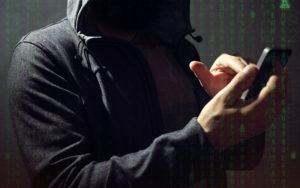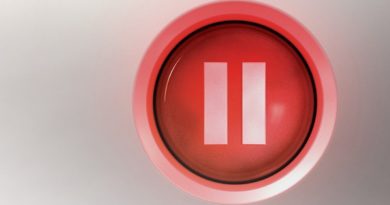Shake It Off
By Stewart Schley
An FCC-embraced protocol will put robocallers back in their place. Here’s how cable’s helping.
Anyone remotely familiar with James Bond knows how Agent 007 likes his martinis. The preference for a “shaken, not stirred” rendition of the cocktail classic reflects a taste for the good life, as befits any self-respecting man of the world who’s armed with a Breitling wristwatch that doubles as a Geiger counter.
It’s especially satisfying, then, that a tacit nod to the author Ian Fleming’s renowned intelligence officer comes from none other than the Federal Communications Commission. The regulatory agency, along with telecommunications industry powers, has embraced the acronym SHAKEN/STIR as shorthand for a mouthful of a protocol set that’s destined to have a positive impact on the world of telecommunications.

Ready? It stands for “Signature-based Handling of Asserted Information Using Tokens” and “Secure Telephone Identity Revisited.” SHAKEN/STIR is a wide-ranging set of rules for managing U.S. telephone networks, using cryptographic certificates to authenticate phone calls. The big conceit here is that as telephone network operators of both the wired and wireless sort adopt the rules framework it becomes possible to identify where phone calls originated. Think of it as caller ID on steroids.
Why does that matter? Because during the few seconds it has taken you to read these paragraphs, a few hundred thousand more “robocalls” just flew through the U.S. telephone network, landing on handset screens, causing ringers to ring and generally annoying users. Many of these calls were fakes, in that the phone number you saw on your glass screen was fictitious: a spoof. A common trick is to twist up the numbers so that you see a prefix that — golly, that’s a coincidence — mimics your own private number. (Mine is 378.) The bad guys presume you’re more likely to answer if you see a familiar prefix. (I don’t, so please don’t try.)
Embedding SHAKEN/STIR into a carrier’s backend systems makes it almost impossible to spoof the network in this way. As the technology gains wide adoption — something the FCC and its Chairman Ajit Pai are determined to see happen — carriers that transmit calls will recognize and preserve the originating call number as its travels through the system, hopping across different carrier networks along the way. In turn, that makes it possible to tag suspect calls with warnings and IDs that let the recipient know something suspicious is happening. Already, some carriers have begun to do this, which is why your next call might carry a label like: “Alert: Telemarketer.” Take that, spam guy.
Default approach
It gets even better. In June, the Commission authorized carriers to apply SHAKEN/STIR as a built-in default. Now, rather than requiring that end-users “opt in” to make use of improved caller ID technology, it’s the other way around. Only those who “opt out” (who are these people, anyway?) will evade the caller ID police.
There are still billions of spam calls flowing to U.S. wireless and wireline telco customers monthly, but the smart money says there will be a stark falloff as carriers meet the FCC’s call for voluntary adoption by the end of this year. If that doesn’t happen, Pai gets out the stick, imposing a mandate from on high. Remember that to work the way it’s supposed to, SHAKEN/STIR needs to be in place across the entire system, or at least across the majority of lines that are connected to modern, digital telephone networks. Older CDMA-based telephony, unfortunately, doesn’t have the chops to employ the supercharged caller ID technology, but the good news is legacy networks represent a minority of the more than 450 million U.S. phone accounts (wireless and wireline combined).
The early impetus for SHAKEN/STIR has fingerprints of the cable industry all over it. For one thing, technology chieftains from Comcast and AT&T jointly chair the working group that developed the technical standards for SHAKEN/STIR. Also, Comcast, a big player in the residential voice category and a rising force in wireless, was among the first carriers to link up with SHAKEN/STIR compatriots like AT&T and T-Mobile. Comcast completed first-of-their-kind arrangements with both carriers earlier this year. These hookups mean a spammer who originates a call within the T-Mobile network environment and causes an Xfinity Voice handset to ring is pretty much out of luck. Either the call is going to be labeled as bad news or routed to voicemail automatically.
Some cable providers are ahead of the game. For more than two years Charter Communications has allied with call-identification provider Nomorobo to help residential phone customers thwart spammers. In a September 2018 FCC filing, Charter said “hundreds of thousands” of customers had signed up for the service over Charter’s website. With the FCC’s new authorization of default implementations, that number should swell dramatically for Charter and for others going forward.
For telecom companies, SHAKEN/STIR isn’t just about meeting a regulatory mandate. The beginnings of what should be a widespread movement to rein in robocalls also gives carriers opportunities to do business. AT&T, Sprint and Verizon already are in the market with premium ($3-$4 per month) caller ID services that let users further personalize their caller ID profiles. With the premium functionality, it’s possible, for example, to dodge calls based on carriers’ severity ratings. This way, at the discretion of customers, even those calls that might be spam — sometimes carriers can’t be entirely sure — are routed straight away to voicemail so that the handset never rings. The premium add-ons also do things like enabling customers to peer behind the curtain, identifying the suspected originators even of those calls that showed up only as unfamiliar numbers. Users can also populate their own “don’t call” lists, taking advantage of SHAKEN/STIR identification protocols to keep undesirable characters from harassing them.
Behind the scenes, one notable realization is how influential the cable industry has been in this effort. Remember, it has been only 20 years ago since cable companies began any serious effort to enter the residential phone business. The CableLabs PacketCable 1.0 specification set that produced the early technical foundation for IP voice calls over cable systems was published in 1999. Now, as exemplified by cable’s involvement in the new protocol development and implementation, the industry is at the forefront of an enormous, generational change in how telephone calls happen in the U.S.
Back then, there were serious questions about whether an industry with a less-than-stellar customer service reputation could make the case that it deserved to be in the mission-critical voice business at all. Now, with more than 30 million residential connections in the U.S., cable’s presence is considered a given, and cablecos are busy developing next-generation features like HD voice, advanced notification options and, now, supercharged caller ID services. Looking back over time, it’s pretty clear the industry deserves a tip of the cap for making the voice progression happen so forcefully. But wait: Forget that: Let’s share a toast instead. I know just the drink to order.
 Stewart Schley,
Stewart Schley,
Media/Telecom Industry Analyst
stewart@stewartschley.com
Stewart has been writing about business subjects for more than 20 years for publications including Multichannel News, CED Magazine and Kagan World Media. He was the founding editor of Cable World magazine; the author of Fast Forward: Video on Demand and the Future of Television; and the co-author of Planet Broadband with Dr. Rouzbeh Yassini. Stewart is a contributing analyst for One Touch Intelligence.
Credit: Shutterstock




